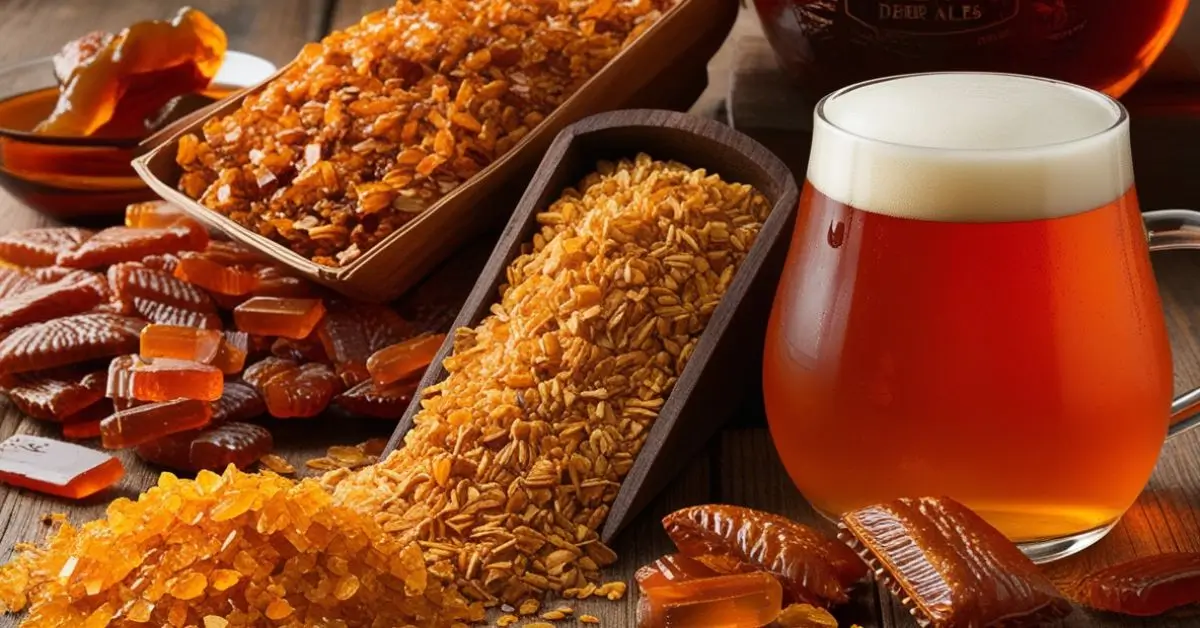Amber ales are a popular choice among beer enthusiasts, celebrated for their distinctive malt-forward sweetness complemented by subtle hop bitterness. But what exactly gives amber ale its sweet flavor? This deep dive explores the brewing techniques, ingredient selection, and flavor profiles that contribute to this signature taste.
The Role of Malt in Amber Ales
The defining characteristic of amber ales—both in flavor and appearance—lies in the malts used during brewing. Amber ales rely heavily on specialty malts, particularly caramel and crystal malts, to develop their sweet, toasty, and caramel-like flavors. These malts are crafted using a process that caramelizes the sugars within, giving the beer its rich, malty backbone and its amber hue.
Caramel and crystal malts are roasted or stewed during production, which creates a unique crystalline structure inside the grain. This structure is key to unlocking the malty sweetness and the notes of toffee, caramel, and even toasted nuts that amber ales are known for. Depending on the exact malt combination and roast intensity, these flavors can vary, making each brew unique.
Balancing Sweetness with Hops
While malts dominate the flavor profile, hops play a vital role in balancing amber ale’s sweetness. Typically, amber ales use American hop varieties like Cascade, Centennial, or Amarillo. These hops introduce a layer of bitterness, citrusy notes, or floral aromas that offset the rich malt flavors, ensuring the beer remains balanced and drinkable.
In American amber ales, hop bitterness is often more pronounced, with flavors ranging from piney to citrusy. This balance of sweetness and bitterness makes amber ales a versatile and crowd-pleasing style.
Yeast’s Contribution to Flavor
Yeast fermentation also contributes to amber ale’s flavor. Many brewers use clean-fermenting ale yeasts, such as American Ale or English Ale strains, which allow the malt and hops to shine. The yeast can add subtle fruity esters that enhance the beer’s complexity, complementing the malt-derived sweetness.
Brewing Techniques for a Sweet Finish
The sweetness in amber ales isn’t just about ingredients—it also comes down to technique. Brewers carefully manage mash temperatures during the brewing process. Higher temperatures encourage the formation of unfermentable sugars, which remain in the final product, adding body and sweetness.
Additionally, some brewers incorporate adjunct ingredients like syrups, honey, or spices to enhance sweetness and diversify flavor profiles.
Amber Ale vs. Other Beer Styles
A key aspect of amber ales is their balance between malt and hops, setting them apart from similar styles like:
| Beer Style | Flavor Profile | Maltiness | Hop Bitterness |
|---|---|---|---|
| Amber Ale | Sweet, caramel, nutty, with balanced bitterness | High | Medium |
| Pale Ale | Light, crisp, with floral or citrusy hops | Medium | High |
| Brown Ale | Toasty, nutty, with minimal bitterness | High | Low |
| Red Ale | Sweet with a heavier malt base and less hops | Very High | Low |
Pairing Amber Ales with Food
Amber ales pair beautifully with a range of dishes due to their balanced flavor profile. Their malty sweetness complements grilled meats, roasted vegetables, and spicy dishes. For dessert lovers, try pairing amber ale with caramel-based desserts or nutty pastries to amplify the beer’s inherent flavors.
Popular Amber Ales to Try
- Alaskan Amber Ale: A malt-forward brew with rich caramel notes.
- Anderson Valley Boont Amber Ale: Toasty and slightly hoppy, perfect for first-time amber ale drinkers.
- Tröegs Nugget Nectar Imperial Amber Ale: A bolder variant with a pronounced hop bitterness.
A Deeper Look at Amber Ales
For an immersive exploration of amber ales and brewing techniques, check out this insightful YouTube video. It delves into malt roasting, hop selection, and other brewing intricacies.
By understanding the role of malts, hops, and brewing techniques, beer enthusiasts can better appreciate what makes amber ale unique. Its balanced sweetness and approachable bitterness make it a standout choice in the world of craft beers.











